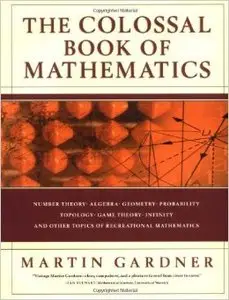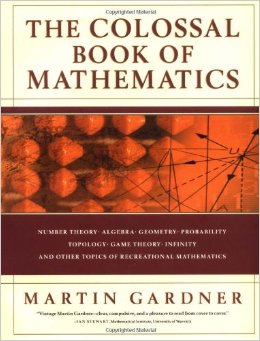Martin Gardner, "The Colossal Book of Mathematics"
2004 | ISBN-10: 0393020231 | 736 pages | PDF | 26 MB
2004 | ISBN-10: 0393020231 | 736 pages | PDF | 26 MB
The author presents a selection of pieces from his Scientific American Mathematical Games column, presenting puzzles and concepts that range from arithmetic and geometrical games to the meaning of M.C. Escher's artwork.
Amazon Review
No amateur or maths authority can be without The Colossal Book of Mathematics–the ultimate compendium from America's best-loved mathematical expert. Whether discussing hexaflexagons or number theory, Klein bottles or the essence of "nothing", Martin Gardner has single-handedly created the field of "recreational mathematics". The Colossal Book of Mathematics collects together Gardner's most popular pieces from his legendary "Mathematical Games" column, which ran in Scientific American for 25 years. Gardner's array of absorbing puzzles and mind-twisting paradoxes opens mathematics up to the world at large, inspiring people to see past numbers and formulas and experience the application of mathematical principles to the mysterious world around them. With articles on topics ranging from simple algebra to the twisting surfaces of Mobiu s strips, from an endless game of Bulgarian solitaire to the unreachable dream of time travel, this volume comprises a substantial and definitive monument to Gardner's influence on mathematics, science, and culture.
In its 12 sections, The Colossal Book of Mathematics explores a wide range of areas, each startlingly illuminated by Gardner's incisive expertise. Beginning with seemingly simple topics, Gardner expertly guides us through complicated and wondrous worlds: by way of basic algebra we contemplate the mesmerising, often hilarious, linguistic and numerical possibilities of palindromes; using simple geometry, he dissects the principles of symmetry upon which the renowned mathematical artist MC Escher constructs his unique, dizzying universe. Gardner, like few thinkers today, melds a rigorous scientific skepticism with a profound artistic and imaginative impulse. His stunning exploration of "The Church of the Fourth Dimension", for example, bridges the disparate worlds of religion and science by brilliantly imagining the spatial possibility of God's presence in the world as a fourth dimension, at once "everywhere and nowhere."
With boundless wisdom and his trademark wit, Gardner allows the reader to further engage challenging topics like probability and game theory which have plagued clever gamblers, and famous mathematicians, for centuries. Whether debunking Pascal's wager with basic probability, making visual music with fractals, or uncoiling a "knotted doughnut" with introductory topology, Gardner continuously displays his fierce intelligence and gentle humour. His articles confront both the comfortingly mundane–"Generalised Ticktacktoe" and "Sprouts and Brussel Sprouts"–and the quakingly abstract-"Hexaflexagons," "Nothing," and "Everything." He navigates these staggeringly obscure topics with a deft intelligence and, with addendums and suggested reading lists, he informs these classic articles with new insight.
Admired by scientists and mathematicians, writers and readers alike, Gardner's vast knowledge and burning curiosity reveal themselves on every page. The culmination of a lifelong devotion to the wonders of mathematics, The Colossal Book of Mathematics is the largest and most comprehensive math book ever assembled by Gardner and remains an indispensable volume for the amateur and expert alike.–Christine Buttery



